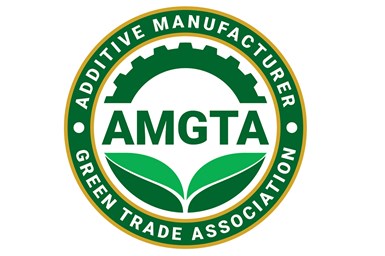AMGTA Reports on Process to Safely Transport, Recycle Metal Powder Condensate Waste
The process was developed by KBM Advanced Materials and Sintavia to passivate metal condensate in a removable resin enabling safe transport and recycling.

The AMGTA was launched in November 2019 to promote the environmental benefits of AM over traditional methods of manufacturing.
The Additive Manufacturer Green Trade Association (AMGTA) — a global trade organization created to promote the environmental benefits of additive manufacturing (AM) — has issued a report outlining the requirements to passivate metal condensate waste for transport and recycling.
The new process, which was developed by AMGTA member Sintavia and KBM Advanced Materials, involves mixing powder condensate waste with a removable resin, which renders the waste nonhazardous and shippable to a recycling plant.
“Today’s report is a must-read for any company involved in laser powder bed fusion metal additive manufacturing,” says Sherri Monroe, AMGTA’s executive director. “Not only does this new process reduce transportation costs but it is also reversible, meaning that metal recycling companies can have unsoiled access to the underlying powder once it is received — thus allowing for the potential to recycle waste material that previously had to be put in a hazardous waste landfill.”
The AMGTA hopes that other companies adopt this new process as it will reduce their transportation costs because the underlying material is no longer hazardous. “This report is an excellent example of the AMGTA taking a leadership role in developing sustainable use practices for additive manufacturing,” says Brian Neff, the AMGTA’s board chair and CEO of Sintavia.
Metal condensate, which is the term used for excess soot and powder that is blown off of a build plate during the powder bed fusion AM process, had previously been treated as a hazardous material and disposed of as such at a very high cost. The full report can be found here amgta.org/resources.
The AMGTA was launched in November 2019 to promote the environmental benefits of AM over traditional methods of manufacturing. The AMGTA is a noncommercial, unaffiliated organization open to any additive manufacturer or industry stakeholder that meets certain criteria relating to sustainability of production or process.
Related Content
-
With Electrochemical Additive Manufacturing (ECAM), Cooling Technology Is Advancing by Degrees
San Diego-based Fabric8Labs is applying electroplating chemistries and DLP-style machines to 3D print cold plates for the semiconductor industry in pure copper. These complex geometries combined with the rise of liquid cooling systems promise significant improvements for thermal management.
-
Beehive Industries Is Going Big on Small-Scale Engines Made Through Additive Manufacturing
Backed by decades of experience in both aviation and additive, the company is now laser-focused on a single goal: developing, proving and scaling production of engines providing 5,000 lbs of thrust or less.
-
3D Printed Titanium Replaces Aluminum for Unmanned Aircraft Wing Splice: The Cool Parts Show #72
Rapid Plasma Deposition produces the near-net-shape preform for a newly designed wing splice for remotely piloted aircraft from General Atomics. The Cool Parts Show visits Norsk Titanium, where this part is made.














